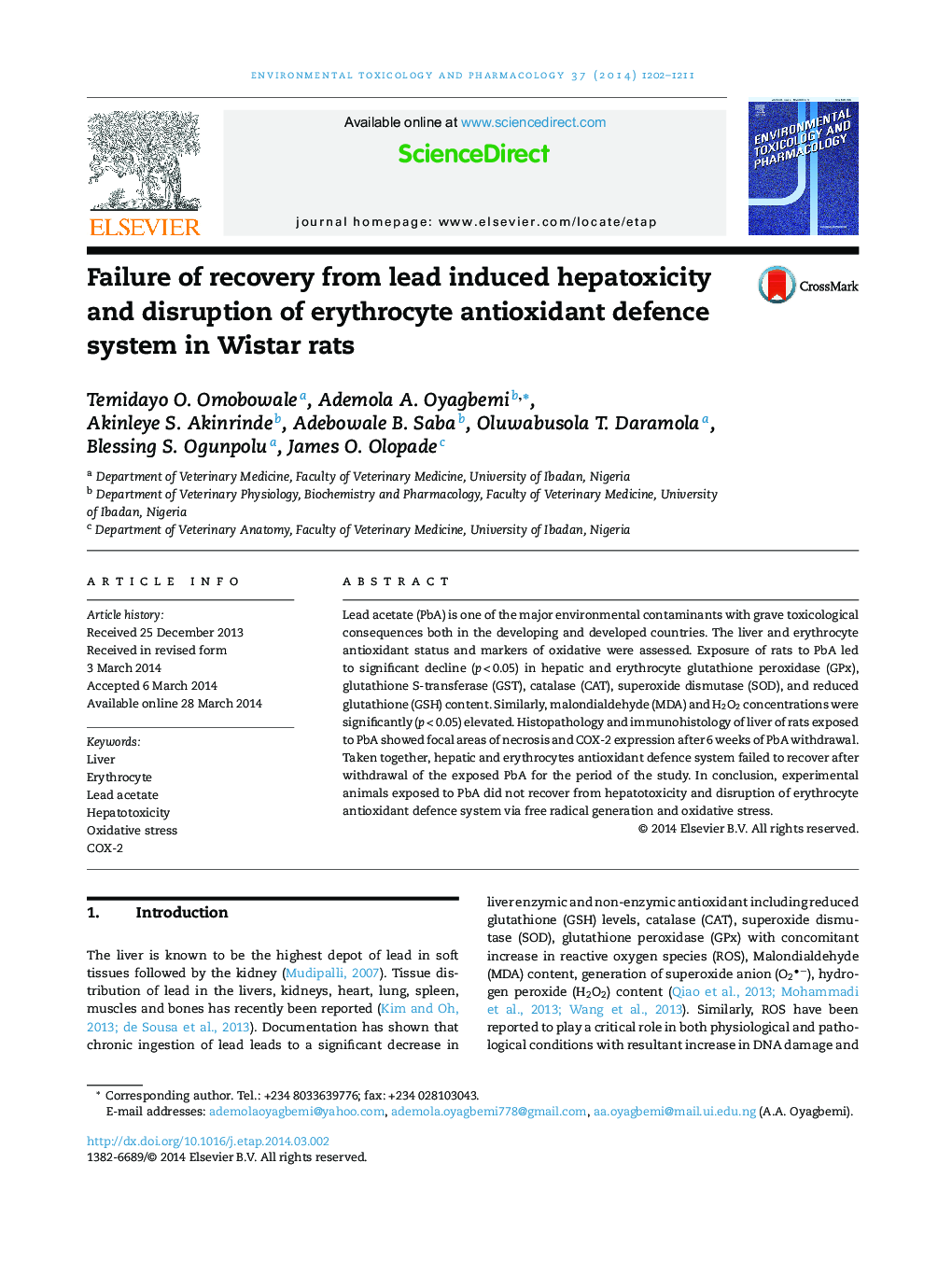| Article ID | Journal | Published Year | Pages | File Type |
|---|---|---|---|---|
| 5849149 | Environmental Toxicology and Pharmacology | 2014 | 10 Pages |
Abstract
Lead acetate (PbA) is one of the major environmental contaminants with grave toxicological consequences both in the developing and developed countries. The liver and erythrocyte antioxidant status and markers of oxidative were assessed. Exposure of rats to PbA led to significant decline (p < 0.05) in hepatic and erythrocyte glutathione peroxidase (GPx), glutathione S-transferase (GST), catalase (CAT), superoxide dismutase (SOD), and reduced glutathione (GSH) content. Similarly, malondialdehyde (MDA) and H2O2 concentrations were significantly (p < 0.05) elevated. Histopathology and immunohistology of liver of rats exposed to PbA showed focal areas of necrosis and COX-2 expression after 6 weeks of PbA withdrawal. Taken together, hepatic and erythrocytes antioxidant defence system failed to recover after withdrawal of the exposed PbA for the period of the study. In conclusion, experimental animals exposed to PbA did not recover from hepatotoxicity and disruption of erythrocyte antioxidant defence system via free radical generation and oxidative stress.
Related Topics
Life Sciences
Environmental Science
Health, Toxicology and Mutagenesis
Authors
Temidayo O. Omobowale, Ademola A. Oyagbemi, Akinleye S. Akinrinde, Adebowale B. Saba, Oluwabusola T. Daramola, Blessing S. Ogunpolu, James O. Olopade,
